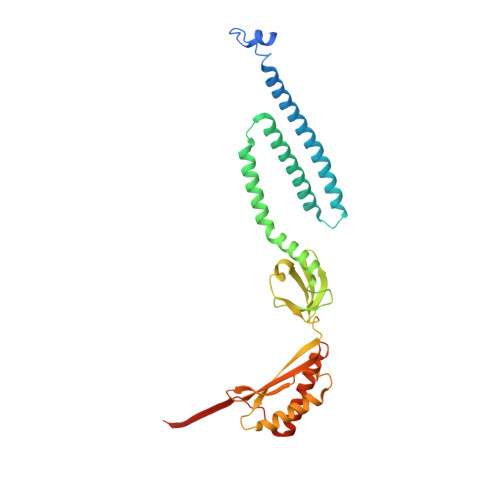Molecular basis of force-from-lipids gating in the mechanosensitive channel MscS.
Reddy, B., Bavi, N., Lu, A., Park, Y., Perozo, E.(2019) Elife 8
- PubMed: 31880537
- DOI: https://doi.org/10.7554/eLife.50486
- Primary Citation of Related Structures:
6PWN, 6PWO, 6PWP - PubMed Abstract:
Prokaryotic mechanosensitive (MS) channels open by sensing the physical state of the membrane. As such, lipid-protein interactions represent the defining molecular process underlying mechanotransduction. Here, we describe cryo-electron microscopy (cryo-EM) structures of the E. coli small-conductance mechanosensitive channel (MscS) in nanodiscs (ND). They reveal a novel membrane-anchoring fold that plays a significant role in channel activation and establish a new location for the lipid bilayer, shifted ~14 Å from previous consensus placements. Two types of lipid densities are explicitly observed. A phospholipid that 'hooks' the top of each TM2-TM3 hairpin and likely plays a role in force sensing, and a bundle of acyl chains occluding the permeation path above the L105 cuff. These observations reshape our understanding of force-from-lipids gating in MscS and highlight the key role of allosteric interactions between TM segments and phospholipids bound to key dynamic components of the channel.
Organizational Affiliation:
Department of Biochemistry and Molecular Biology, The University of Chicago, Chicago, United States.
















